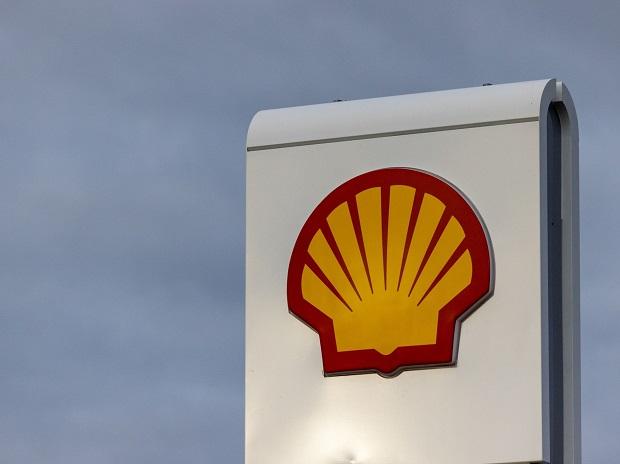Shell India hikes diesel prices by Rs 20 per litre in less than a week
Shell India has hiked diesel prices by as much as Rs 20 per litre in less than a week’s time, but the dominant public sector fuel retailers continue to keep rates on freeze for a record 18th month in a row.
With international oil prices hovering around USD 90 per barrel, the India unit of the world’s second-largest oil and gas company last week started raising fuel prices by Rs 4 per litre every day, company dealers and industry sources said.
The result is Shell India, whose 346 petrol pumps are mostly concentrated in the southern and western states, is now selling diesel at Rs 130 per litre in Mumbai and Rs 129 in Chennai.
Petrol at Shell bunks costs Rs 117-118 a litre.
This compares to a price of Rs 106.31 a litre for petrol at public sector company’s petrol pumps in Mumbai and Rs 102.63 in Chennai. Diesel at PSU pumps costs Rs 94.27 a litre in Mumbai and Rs 94.24 in Chennai.
In Bengaluru, Shell is selling diesel for Rs 122 as compared to Rs 87.92 a litre rate at petrol pumps owned by public sector firms and Rs 87.99 per price at Reliance-BP bunks.
Dealers said a Rs 4 a litre hike is in offing in diesel prices at Shell pumps on Thursday as well and rates will continue at that level for the remainder of October. Diesel price in Mumbai will hit Rs 134 a litre on Thursday.
Shell does not own an oil refinery, which converts crude oil extracted from below ground or seabed into fuels like petrol and diesel, in the country. It sources products and market prices and has revised rates to reflect a surge in international oil prices since August.
“Our pricing depends on various factors, such as government taxes and duties, distribution costs, and operational expenses. We strive to give our customers the best value possible: providing high-quality fuels to help enhance engine performance and efficiency,” the spokesperson said.
State-owned Indian Oil Corporation (IOC), Bharat Petroleum Corporation Ltd (BPCL) and Hindustan Petroleum Corporation Ltd (HPCL) own 79,204 out of 87,677 petrol pumps in the country. Russia’s Rosneft-backed Nayara Energy is the largest private fuel retailer with 6,422 bunks while Reliance-BP has 1,633. Shell has 346 pumps.
Nayara, which owns a 20 million tonnes a year refinery at Vadinar in Gujarat, has so far not made any major price changes. Reliance too owns refineries in Gujarat.
Sources said international oil prices had moderated in May/June this year, helping oil companies make handsome profits at the capped retail prices.
However, global rates started firming up in July and have turned margins negative. The basket of crude oil that India buys averaged close to USD 75 a litre in May and June but rose to USD 80.37 in July and USD 86.43 in August. In September, it averaged USD 93.54 per barrel and the average for this month is USD 92.72.
According to brokerage Nomura, state-owned fuel retailers lost Rs 7 per litre at the current retail prices.
International oil prices have been turbulent in the last couple of years. It dipped into the negative zone at the start of the pandemic in 2020 and swung wildly in 2022 — climbing to a 14-year high of nearly USD 140 per barrel in March 2022 after Russia invaded Ukraine, before sliding on weaker demand from top importer China and worries of an economic contraction.
But for a nation that is 85 per cent dependent on imports, the spike meant adding to already firming inflation and derailing the economic recovery from the pandemic.
IOC, BPCL and HPCL, which control roughly 90 per cent of the market, temporarily abandoned the daily price revision in late 2021 and have not revised petrol and diesel prices in line with the cost. They stopped daily price revision in early November 2021 when rates across the country hit an all-time high, prompting the government to roll back a part of the excise duty hike it had effected during the pandemic to take advantage of low oil prices.
The freeze continued into 2022 but the war-led spike in international oil prices prompted a Rs 10 a litre hike in petrol and diesel prices from mid-March before another round of excise duty cut rolled back all of the Rs 13 a litre and Rs 16 per litre increase in taxes on petrol and diesel effected during the pandemic.
That followed the current price freeze that began on April 6, which still continues.
Holding prices when input cost was higher than retail selling prices led to the three firms posting net earnings loss. They posted a combined net loss of Rs 21,201.18 crore during April-September 2022 despite accounting for Rs 22,000 crore announced but not paid LPG subsidy.
They posted profits in subsequent quarters.
